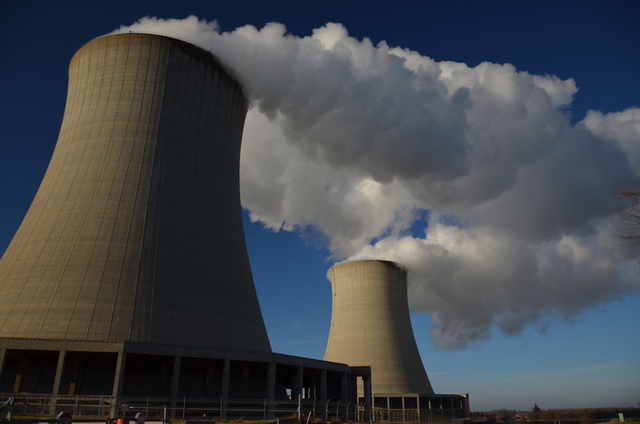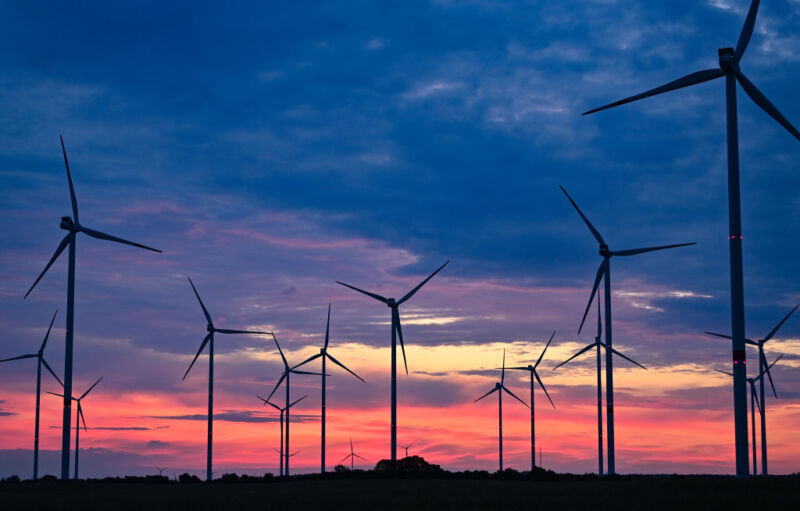The United States gets about 40 percent of its electricity from carbon-free sources, including renewables and nuclear, and researchers have a pretty good idea of how to cost-effectively get to about 90 percent.
But that last 10 percent? It gets expensive, and there is little agreement about how to do it.
A new paper in the journal Joule identifies six approaches for achieving that last 10 percent, including a reliance on wind and solar, a build-out of nuclear power, and development of long-term energy storage using hydrogen.
This isn’t a matter of one pathway winning out over the others, said Trieu Mai, the paper’s lead author and senior energy researcher for the National Renewable Energy Laboratory in Golden, Colorado.
“A 100 percent carbon-free power system will require a portfolio of resources,” he said. “But humility is needed to accept that we don’t know what the optimal mix to solving the last 10 percent” is going to be.
The larger point, he said, is that researchers and industry need to be doing the work now to figure out which technologies are the most viable in order to meet the goal, set by the Biden administration, to get to net-zero emissions in the electricity sector by 2035.
Here are the six options from the paper, along with what I see as their pluses and minuses:
- Wind and solar power with short-term energy storage and an expansion of interstate power lines. Pluses: Low costs and the technology is already available. Minuses: To be available around the clock, wind and solar need to work alongside energy storage systems, so this is a package deal. Also, the country will need a major expansion of interstate power lines to deliver wind and solar, a prospect that is costly and politically fraught. And, the growth of wind and solar requires a lot of open land, which has led to conflicts at the local level in communities that don’t want to host the projects.
- Other renewables, including geothermal, hydropower, and biomass. Pluses: The technologies are already available, and they can operate around the clock. Minuses: Relatively high costs. Geothermal has limits in where it can be built. Hydropower is vulnerable to falling water levels, and construction of new hydropower plants could be a danger to ecosystems. Biomass, which includes power plants that burn wood, is controversial because of the loss of trees and a disagreement about whether it should be considered a carbon-free energy source.
- Nuclear, along with fossil fuels and carbon capture. Pluses: Nuclear is a vital part of today’s mix of carbon-free electricity, which shows how the technology could be used in a future grid. Fossil fuel plants, if they could be retrofitted with carbon capture technology, are well-suited to providing peak power. Both can operate around the clock. Minuses: Nuclear is expensive and has a lot of baggage in terms of safety concerns. As for carbon capture, the technology has not been deployed successfully on a large scale, and it has been dismissed by some analysts as too expensive and inefficient. (The NREL report put these two resources in the same category because of some common traits, including 24-7 capability and high upfront costs and medium operational costs.)
- Long-duration energy storage using hydrogen. Pluses: The idea is that energy companies would use renewable energy to produce hydrogen from water, and then the hydrogen could be stored in vast caverns. During times of high electricity demand, the hydrogen could be released and burned to power a gas turbine or a fuel cell. If this could be done cheaply enough and stored in large enough quantities, it’s an opportunity to replicate the role of natural gas power plants in today’s grid. Minuses: Of all of the six, this may be the farthest away from being ready for the market, so talk of its benefits and drawbacks involve a lot of speculation.
- Carbon dioxide removal. Pluses: This covers a variety of approaches to removing carbon from the environment, including direct air capture and tree-planting. Even if this doesn’t end up being a major part of reducing emissions in the electricity sector, it could be an essential in other sectors, like heavy industry, that are more difficult to decarbonize. Minuses: Some carbon removal technologies are expensive relative to other options, and it’s not clear that they would work on the scale needed.
- Reducing electricity demand. Pluses: Low costs. As energy conservation advocates like to say, it is much cheaper to conserve a kilowatt-hour than it is to generate one. Minuses: Energy conservation measures, which include a gamut of programs and technologies, can be complicated to implement and require buy-in from policymakers and consumers.

The “last 10 percent” challenge is nothing new. What is new is the need to serve the last 10 percent with carbon-free resources.
In the current grid, more than one-third of the country’s power plant capacity is needed to meet roughly the last 10 percent of demand, according to the NREL paper. This means there are hundreds of power plants that sit idle most of the time but are an essential resource for making sure that there is enough electricity to meet demand on the hottest and coldest days of the year.
Much of this “peak power” is provided by natural gas power plants, which can ramp up and down on short notice. But those plants will need to close or find a way to store their emissions in a carbon-free grid.
The paper is diplomatic as it wades into some of the most contentious debates in the energy world.
A growing segment of energy researchers say that the electricity system can run on 100 percent renewable energy, which would mean renewables and energy storage would provide the last 10 percent. This approach sees no good reason to build new nuclear plants or to use carbon capture systems on fossil fuel plants, citing high costs and a variety of other concerns.
At the same time, a sizable group of energy researchers maintain that nuclear and carbon capture are essential parts of getting to carbon-free electricity. This side has doubts about the ability of renewable sources to meet all needs, citing concerns about the availability of land and the intermittent nature of wind and solar. They note that wind and solar are not a low-cost option when taking into account the amounts of storage and power line capacity needed to make those resources reliable for meeting peak demand.
Mai acknowledged the strong feelings surrounding some of these questions.
“We just want people to recognize that within each option, there are tradeoffs,” he said. “We recognize the degree of uncertainty with all of these technologies, and we need to lay that out on the table.”
Also, he pointed out that the paper is asking a specific question about meeting the last 10 percent of electricity demand and that there is a separate, and also important, question about the right mix of resources for getting to 90 percent carbon-free electricity.
To get to 90 percent, roughly double the current share, he thinks wind, solar, and battery storage will play major roles, along with additional interstate power lines.
So it’s possible to say that the country should have much more renewable energy than it does today, and also say that it’s an open question whether wind and solar are well-suited to provide the last 10 percent.
Within all of this is something encouraging: Researchers and energy companies have figured out how to start the transition to 100 percent carbon-free electricity, and they have a pretty good idea of what the in-between steps will look like. Now, they are beginning to dig deep on how this journey to a carbon-free grid may end.



3175x175(CURRENT).thumb.jpg.b05acc060982b36f5891ba728e6d953c.jpg)

Recommended Comments
There are no comments to display.
Join the conversation
You can post now and register later. If you have an account, sign in now to post with your account.
Note: Your post will require moderator approval before it will be visible.